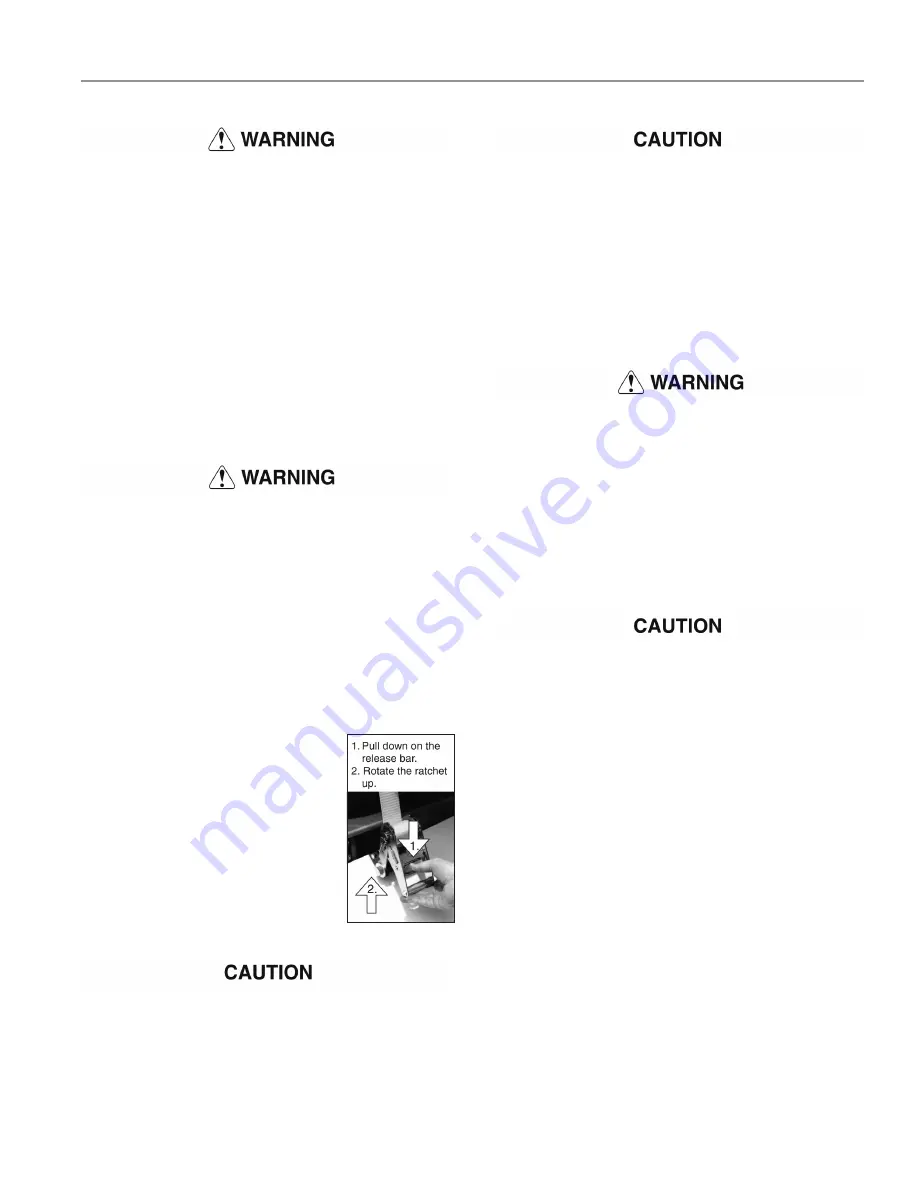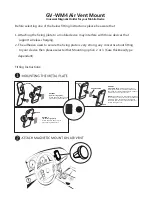
Be certain that the bed tilt latch has been prop-
erly released before backing the towed vehicle off
the dolly. If you attempt to unload the dolly without
releasing the bed tilt latch, severe non-warranty
damage will result to the dolly and the towed ve-
hicle.
7.
Have an assistant guide you off the dolly. As you
begin to back up, the ramps will tilt to the ground. Con-
tinue slowly down the ramps until the towed vehicle is
completely off the dolly.
Always unload the towed vehicle before discon-
necting the dolly from the motorhome. It is nearly
impossible to control the combined weight of the
dolly and towed vehicle when disconnected from
the motorhome. Attempting to do so may cause
property damage, personal injury or even death.
8.
With the towed vehicle unloaded, raise the ramps
until they are securely locked in the up position.
9.
Store the bed safety chains and TieDown straps in
the locking storage trays.
The storage trays are not designed to be water-
proof. If the dolly is to be left outdoors for long
periods of time, remove the straps or any other
items that can be damaged by moisture.
10.
Reinsert the steering pin. It must be in place when-
ever the dolly is moved without a towed vehicle. Without
the steering pin, the dolly wheels can easily steer in the
wrong direction and cause the tires to drag sideways.
11.
Disconnect the safety chains and wiring plug from
the motorhome.
12.
Disconnect the dolly from the trailer ball by raising
the coupler latch.
continued from preceding page
The combined motorhome, dolly and towed
vehicle will take significantly longer to accelerate
and pass other vehicles. Stopping distances may
be greatly increased. Failure to compensate for the
tow dolly and towed vehicle while towing may result
in a loss of vehicular control, which may cause
property damage, personal injury or even death.
2.
If the tow dolly sways or fishtails while towing, bring
the motorhome to a slow, controlled stop. Each of the
following can cause or contribute to vehicle sway: tow-
ing a vehicle backwards; excessive weight in rear of
vehicle; insufficient tire pressures; damaged rims or
wheel bearings; excessive speeds; unlocked steering
wheel. Additionally, the towed vehicle’s wheels must
be straight and square with the dolly.
Towing a vehicle that sways excessively may
cause a loss of control. Failure to correct excessive
sway, as described above, may result in property
damage, personal injury or even death.
Unloading the dolly
1.
Stop the motorhome on flat ground with both ve-
hicles in line. Turn the engine off, put the transmission
in park and set the emergency brake.
2.
If the driveshaft was removed for towing, replace it
at this time.
3.
Disconnect the wiring for the auxiliary lighting on
the towed vehicle.
4.
Disconnect the bed safety chains
from underneath the towed vehicle.
5.
Unlock the ratchets and remove
the TieDown
™
straps. To unlock the
ratchet, use your thumb to pull down
the release bar while rotating the
ratchet upward, as shown to the
right. The release bar will lock open
when the ratchet has been rotated
straight up. Unwind the strap from the
ratchet and remove the TieDown straps.
After removing the TieDown straps, lower the
ratchets to prevent the vehicle from catching on
them while unloading. Otherwise, the tow dolly and/
or the towed vehicle may be damaged.
6.
Pull the bed tilt handle to release the tilt latch. Visu-
ally inspect the tilt latch under the vehicle to verify that
the bed is free to tilt.
11
USING YOUR TOW DOLLY






































